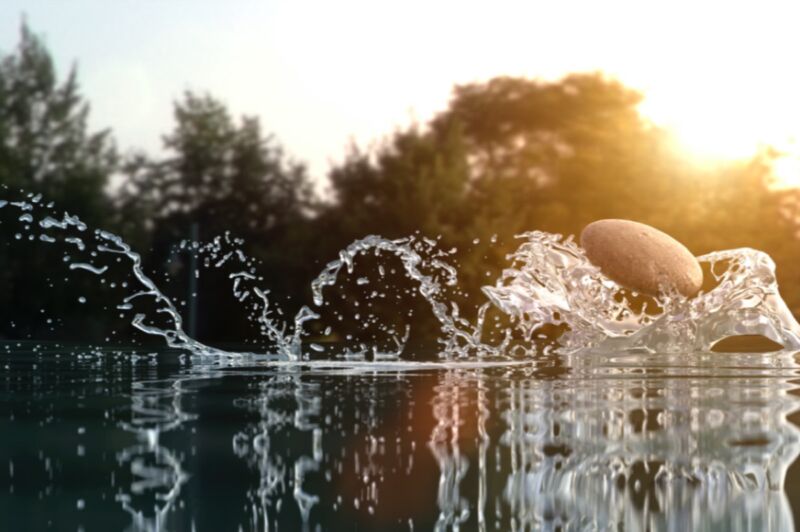What the physics of skipping stones can tell us about aircraft water landings

Enlarge / Experiments by Chinese physicists have shed further light on the intricate physics involving in skipping a stone across the water's surface. Their findings revealed key factors that could influence spaceflight water landings after re-entry. (credit: Colin Anderson Productions / Getty Images)
Learning how to skip stones across a lake or pond is a time-honored childhood tradition. The underlying physics of skipping stones could also be a useful model for landing aircraft or spacecraft on water, according to a recent paper published in the journal Physics of Fluids. Chinese physicists have built just such a model, and they used it to further clarify the key determining factors behind how many times a stone (or spacecraft) will bounce upon hitting the water.
Skipping stones is just the sort of natural everyday phenomenon that would fascinate physicists, even though at first glance the basic concepts seem simple. It all comes down to spin, speed, shape of the stone, and angle. As the stone hits the water, the force of impact pushes some of the water down, so the stone, in turn, is forced upwards. If the stone is traveling fast enough to meet a minimum velocity threshold, the stone will bounce; if not, it will sink. A round, flat stone is best, simply because its surface area displaces more water as it skips.
Experiments in 2004 by French physicists Lyderic Bocquet and Christophe Clanet demonstrated as much. They built a catapult device to toss aluminum disks at a tank of water and then recorded the splashes with high-speed video. They learned that the bouncing stone must be spinning at a minimal rate of rotation (at least once during its collision time) in order to be stable. In other words, a skipping stone relies on the gyroscopic effect, in which a body rotating around its own axis tends to maintain its own direction. (It's also what stops a spinning top from tipping over.) Experienced stone-skippers typically apply this rotation to the stone with a simple flick of the finger.
Read 11 remaining paragraphs | Comments